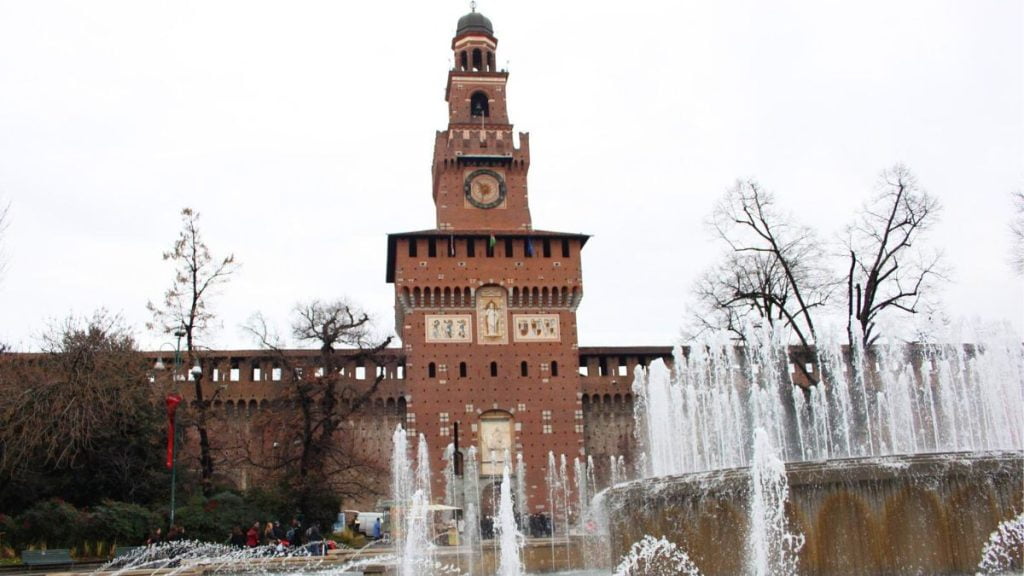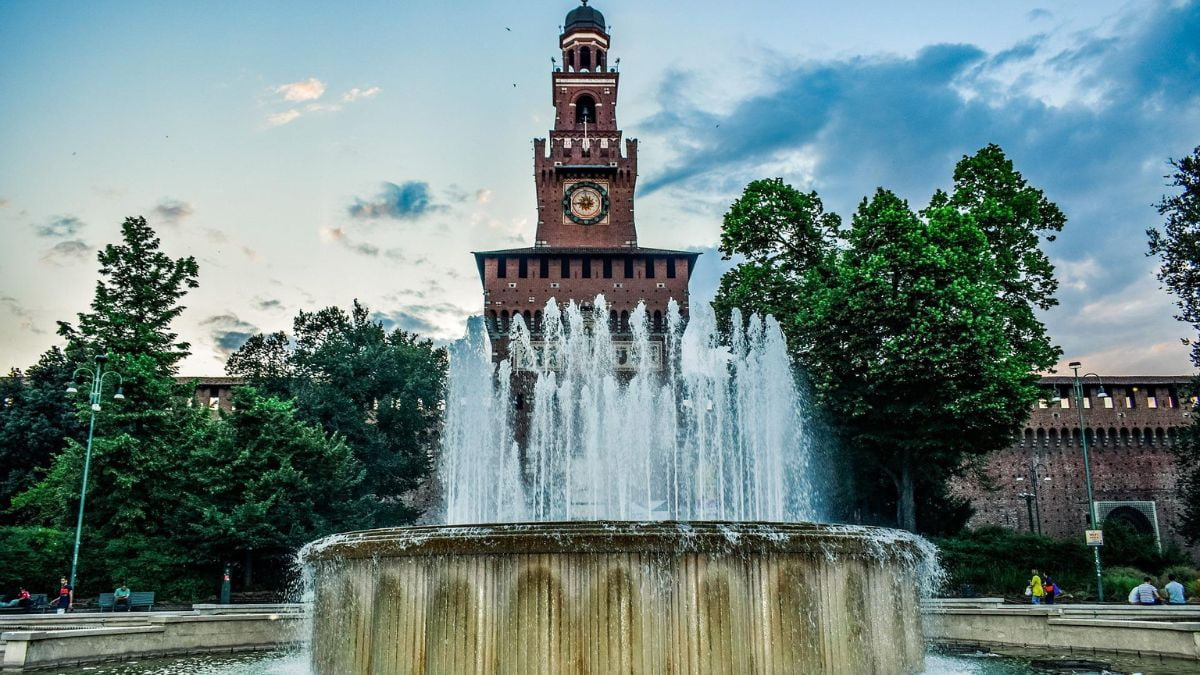Sforzesco Castle in Milan was commissioned by Francesco Sforza in the 15th century and is currently the site of an impressive art museum. The Castello Sforzesco has several museums, including the Museum of Musical Instruments, the Museum of Antique Art, and the Picture Gallery. You may find Michelangelo’s incomplete last masterpiece, the “Rondanini Pietà,” there. Andrea Mantegna, Giovanni Bellini, Filippo Lippi, Correggio, and Jacopo da Pontormo are just a few of the Italian Renaissance and 17th-century artists whose works may be seen in the Picture Gallery. The French and Dutch collections are likewise rather strong.
Sforza Castle, a magnificent 15th-century stronghold erected on the remains of a former medieval castle, is located just outside Milan’s historical center. It was commissioned by Francesco Sforza, Lord of the city at the time. Following the succession of monarchs throughout Milan’s history prior to the Unification of Italy, the Castle changed hands several times over the years. Members of prominent Milanese dynasties, such as the Sforza, as well as emperors and world leaders like Charles V and Napoleon Bonaparte, served as governors.

The reason for this was because the stronghold had served as a military base for invading armies for ages, allowing them to launch attacks on the local population from inside its towers, as occurred in 1848 during the Milanese insurrection against the Austrian Hapsburgs (the famous Five Days of Milan). Instead of demolishing it, they opted to restore it to its original Sforza-era glory.
Once home to the Modern Art Gallery (which was located there until 1920), the Castle was severely damaged during World War II but has since been renovated and is now home to the School of Applied Engineering and the Arts (until 1999). An art gallery was later established as a result of these ties to the creative community; it has works by such illustrious artists as Tiepolo, Andrea Mantegna, Filippo Lippi, Canaletto, Bronzino, Tintoretto, and many more.
Although time has passed, Milan has not forgotten the significance of the Castle. By serving several purposes, it has grown in stature within the city’s cultural landscape. In addition to the stunning Art Gallery, the Archaeological Museum (which is split into the Prehistoric Museum and the Egyptian Museum) and other exhibits, libraries, and archives are now located inside the complex.
More on Animesonnet.com: Balmoral Castle, here
Temporary exhibits, seminars, meetings, and conferences all take advantage of the vast area that the Castle occupies. In conclusion, if you’re feeling exhausted after all that art, the Parco del Sempione, one of Milan’s greatest green spaces, is located on the site of the former Piazza d’Armi. You may find a library and a charming tiny lake within, in addition to a wide range of flowering plants.
Exactly what is it about the Sforza Castle that makes it so appealing?
Do you know that the Castello Sforzesco also has some Leonardo da Vinci artifacts? In a letter to his protégé Leonardo, Ludovico Maria Sforza, il Moro (the Moor), commissioned a painting of the Sala dell’Asse. The research of architect Luca Beltrami and historian Paul Müller-Valde led to this discovery (Axis Hall). Although the fresco on the Sala delle Asse’s ceiling was first uncovered in 1893, subsequent restoration work (the most recent of which started in 2013 and continues to this day) has exposed (and is continuously bringing to light) new areas of the work.

The famous Trivulziano Codex is housed in the fortress’s eponymous Library, further cementing Leonardo da Vinci’s presence there. The Codex is a compilation of Leonardo’s writings and paintings from the years 1478-1493. It consists of 51 separate documents. Notes on technical and architectural projects, as well as those that continue to relate to war equipment, are included here, together with other writings by the Tuscan Genius. Among the documents are caricatures of various people, as well as lists of posh words and Latin phrases that Leonardo may have used to expand his vocabulary.
The complex is both visually stunning and impressive in scale, ranking among Europe’s top fortified buildings. After serving as a military fortress in its early days, Città di Castello is one of Milan’s most known cultural institutions because of the many changes it has experienced throughout the years at the hands of many governors. There is a lot to do and see at the Castle, whether your interest is in the history of the fortress’ construction or in learning more about the city as a whole.
Remember that the Sforza Castle is a free attraction if you’re interested in seeing this masterpiece of military design. Even now, the Sforza Castle Museums’ admission may be purchased in tandem with an Audio Guide of Milan, one of the world’s foremost centers of the fashion industry.
Conclusion
This impressive fortress was originally built by Galeazzo II Visconti in the early 1300s. After being destroyed and rebuilt multiple times throughout the ages, Francesco Sforza finally oversaw a complete rebuilding of the structure in the 1450s. Originally planned by the Florentine architect Antonio Avelino – also known as Filarete (roughly, “lover of perfection”) — and renovated in the 19th century by Luca Beltrami, the majestic clock tower makes the Castle immediately recognized in the city skyline.
Amazingly, the Castle has been kept in pristine condition all these years afterward. It has a number of public museums showcasing anything from ancient and Egyptian art to paintings, musical instruments, and even furniture from the 21st century. While the gallery has works by such illustrious Italians as Mantegna, Giovanni Bellini, and Antonello da Messina, the true masterpiece is Michelangelo’s unfinished “Pietà Rondanini,” which he worked on in his last years.

